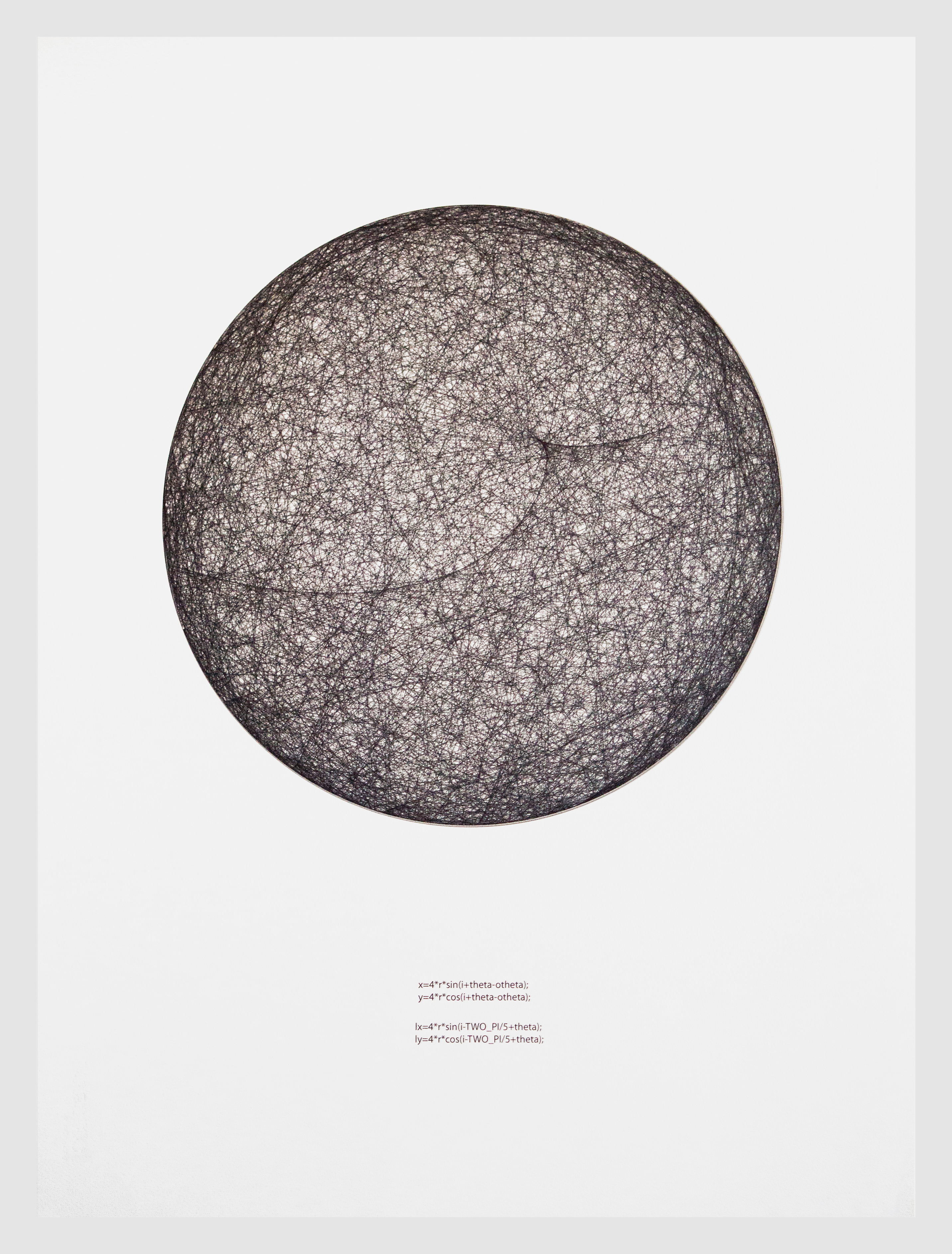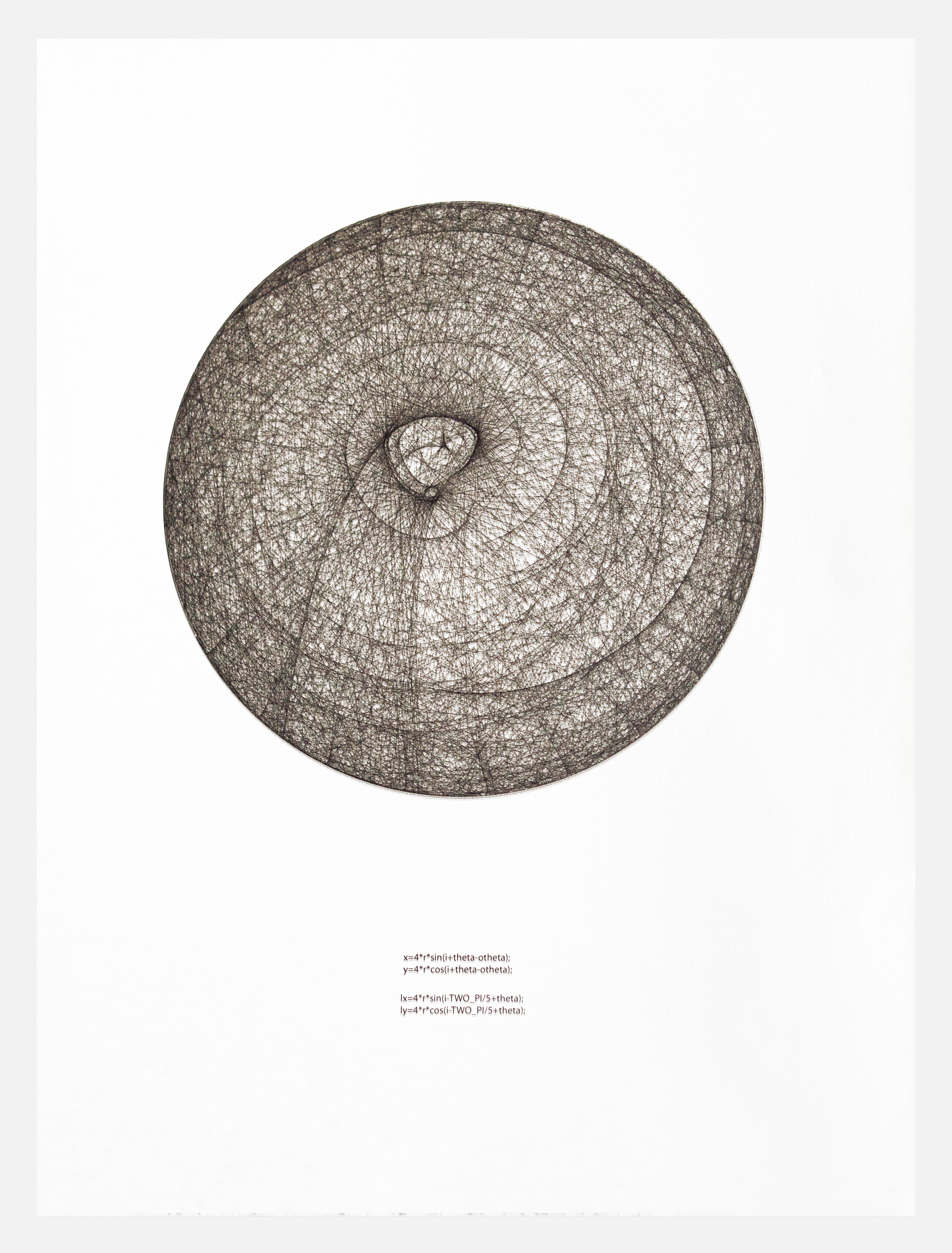Moon Like
Couple of years ago, I went to a wedding in Hawaii, and the stars and moon by the ocean scape inspired me to prototype some random equations. Later on, those sketches along with The Algorithms Research course that I took with Heather Dewey-Hagborg at school turned into those art pieces finally.
The following is a sample of my grad research at NYU. Full article is published at HZ-Journal.
According to Professor Antoine Picon from Harvard University, since the 18th century, the importance of geometrical methods in architecture has been gradually discarded by the development of calculus. [^] Thus, geometry has endured in absence through this transformation of formalizing computation in architectural design and digital art. Mathematics from the understanding of geometry concerned the compositions of logistic proportioning rather than the arithmetic of numerical measurements. [^] Numbers were used mainly for indicating processes and marking proportional segments. This suggests that successful artisan achievements in construction and composition followed well established and systemized rules given the absence of binary/arithmetic based computation.
^Antoine Picon, "Architecture and Mathematics: Between Hubris and Restraint," Architectural Design vol. 81, no. 4 (2011): pp. 28–35. ^ Mario Carpo, "Drawing with Numbers: Geometry and Numeracy in Early Modern Architectural Design," Journal of the Society of Architectural Historian, vol. 62, no. 4 (2003): pp. 448–469.








